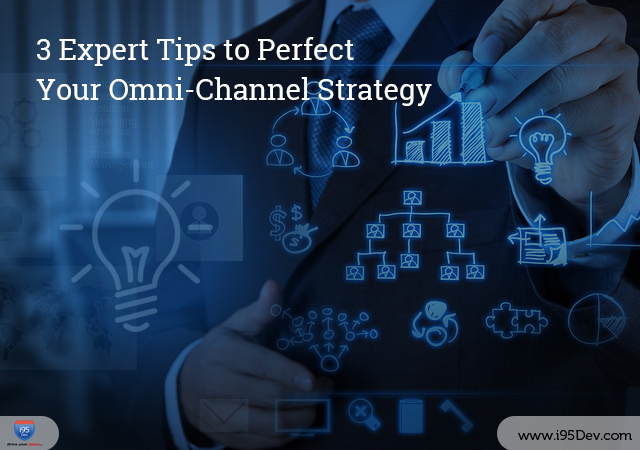An omni-channel approach definitely helps deliver a more consistent customer experience across all channels. However, mere adoption of the multiple channels will not do, you have to pick the right strategy to see the real results.
Hits and Misses
A well-crafted omni-channel strategy will help you maximize sales from each channel. If that’s not happening for you, take a moment to consider your strategy. You are most likely, missing something important. Our experts have identified 3 key fixes that can get your omni-channel strategy on track.
The Three Fixes
1) Get the Analytics Fix
Getting insights on the customer behavior is crucial for omni-channel success. A customer’s journey across physical and digital channels needs to be accurately mapped and analyzed to deliver a more personalized shopping experience. The addition of analytics lends omni-channel retailing real-time insights on customer engagement absent in multi-channel retailing. It lets businesses target customers with the right marketing message based on where they are at in their buyer’s journey. Such targeted campaigns have higher conversion rates.
Analytics also helps retailers identify opportunities for up-selling and cross-selling and in identifying gaps in engagement. Predictive analytics goes further and tracks evolving trends in consumer behavior ensuring that retailers with omni-channel strategies stay ahead of the curve.
2) Product-Channel Sync
Sometimes, simple mistakes may be the cause for a dip in sales or low sales growth. A product can reach its true sales potential only when it leverages the right channel to reach its target market. If a product is largely targeted towards a particular demographic, selling on platforms frequented by that demographic is crucial. For instance, if millennials are your target market, social commerce is where you must focus your efforts.
The best channel to sell a particular product also depends on the product characteristics. A product that needs to attract customers visually, needs to be showcased on platforms that champion visual creativity. If you run a resort chain, targeting prospective customers through Instagram ads is a great idea. But a good omni-channel strategy mustn’t end there. It must deliver a frictionless shopping experience through a mobile-optimized website. The website should build on the Instagram experience through the right marketing and promotional content. It needs to allow the prospect to complete the purchase on his/her phone with great ease.
Remember, omni-channel only talks about delivering a seamless and consistent experience across channels. It does not advocate or recommend giving equal or more importance to a specific channel or channels. A channel might dominate for a particular product or brand and your marketing & sales strategy must be aligned to that; while taking care of customer experience if they decide to interact with you on any other channel.
The product-channel sync is crucial and getting it right is important to make your omnichannel strategy work.
3) It is not about online vs. offline – use online to score offline wins
In-store cannibalization is often a concern for retailers with a large offline footprint. A recent survey by HRC Advisory brought home the truth in those concerns. It found that nearly 75% respondents found e-commerce transactions were stealing sales from store fronts. E-commerce growth rates are surpassing brick-and-mortar sales by a good 10-15% margin.
Most retailers including those with omni-channel strategies fail to strike a balance between in-store and online sales. That is because, they think omni-channel is all about customer experience and continue to look at online and offline as two disjoint channels, instead of leveraging one to support the other. For example, beacon technology can help retailers leverage mobiles to increase in-store sales.
If you haven’t already heard, ‘beacon technology’ is transforming the offline shopping scene. It helps retailers communicate with their customers using their online app. Based on the user’s previous shopping behavior, personalized offers are sent to the user when he/she is in the vicinity of a store. For in-store shoppers, special offers are generated based on their shopping history. This, in turn, helps companies reap up-selling and cross-selling gains.
Knowing exactly what a shopper is looking for will help target the right offers to the right customer at the right time. According to a study by Business Insider beacon sales drove sales in retail by $40 Billion in 2016! Only a handful of retailers are currently using the technology and given its huge potential to drive in-store sales it’s a great addition to your omni-channel toolbox.
So, ready to take on an omni-channel approach? Worried about time and costs involved? Well, don’t! There are excellent off-the-shelf solutions in the market to help companies implement omni-channel strategies quickly and cost effectively. i95Dev’s eCommerce Growth Engine (EGE) is one such solution.




